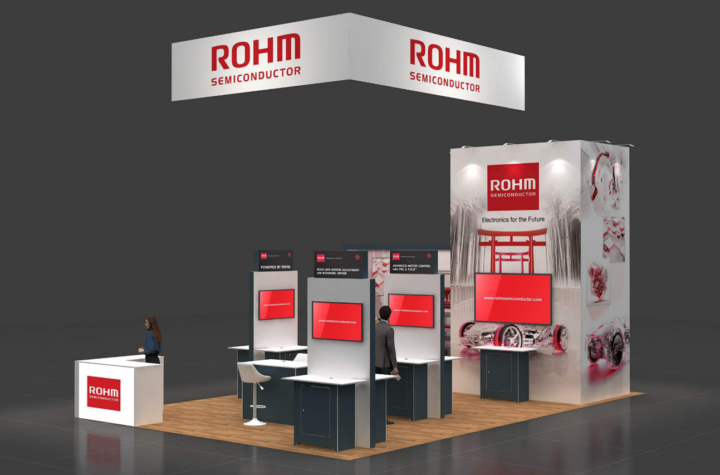
Two research teams from the University of Maryland Energy Research Center were awarded grants from the Advanced Research Projects Agency-Energy (ARPA-E) to develop transformational electric vehicle (EV) energy storage systems using innovative chemistries, architectures and designs. The two University of Maryland (UMD) projects were among 22 selected nationwide that received a total of $36 million in research funding from ARPA-E’s new program, Robust Affordable Next Generation Energy Storage Systems (RANGE).
ARPA-E’s RANGE program aims to accelerate widespread EV adoption by dramatically improving driving range and reliability, and by providing low-cost, low-carbon alternatives to today’s vehicles. RANGE seeks to reduce vehicle costs by re-envisioning the total EV battery system, rather than working to increase the energy density of individual battery cells. RANGE projects will also focus on multifunctional energy storage designs that use these robust storage systems to simultaneously serve other functions in a vehicle, further reducing an energy storage system’s effective and overall EV weight.
The first University of Maryland ARPA-E project, led by Professor of Chemical and Biomolecular Engineering Chunseng Wang in partnership with Kan Xu at the Army Research Laboratory, is titled “Multiple-Electron Aqueous Battery,” and was awarded $405,000. The second project, led by University of Maryland Energy Research (UMERC) Director and Professor of Materials Science and Engineering Eric Wachsman, is titled “Solid-State Lithium-Ion Battery with Ceramic Electrolyte,” and was awarded $574,275.
Multiple-Electron Aqueous Battery
Lithium-ion batteries have not been extensively adopted in electric vehicles due to short driving range, high cost, and low safety and reliability. In particular, the concerns over cell safety and reliability require more protection on pack- and system-level engineering, increasing the cost and reducing system energy density. Researchers at the University of Maryland and Army Research Lab (ARL) will work together to develop a hybridized ions aqueous battery that could cut the Li-ion battery system cost in half and would enable an EV to travel two times as long per charge. The University of Maryland team will make a critical breakthrough in improving the energy density of aqueous battery by doubling the cell voltage from 1.2 V to 2.5-3.0V and doubling the capacity using intercalation chemistries by the twin ions. The intrinsic safe co-ion aqueous battery could significantly reduce the cost of battery management, improve the reliability, and can operate in temperature ranges from -30oC to +70oC. If successful, UMD’s aqueous battery would make EVs cost/safety-competitive and travel 300 miles on a single charge, contributing to the widespread public acceptance of EVs. Increased use of EVs would decrease U.S. dependence on foreign oil, and reduce CO2 emissions from burning the gasoline, which accounts for 28% of the greenhouse gas emissions.
Solid-State Lithium-Ion Battery with Ceramic Electrolyte
The University of Maryland will develop ceramic materials and processing methods to enable high-power, solid-state, lithium-ion batteries. While most lithium-ion batteries are liquid based, solid-state batteries have a greater abuse tolerance that reduces the need for heavy protective components. UMD will leverage multi-layer ceramics processing methods to produce a solid-state battery pack with lower weight and longer life. The team will develop an intrinsically safe, robust, low-cost, high-energy-density all-solid-state Li-ion batteries (SSLiBs), by integrating high conductivity garnet-type solid lithium-ion electrolytes and high voltage cathodes in tailored micro/nano-structures, fabricated by low-cost supported thin-film ceramic techniques.
“Due to their all solid state construction, these lithium-ion batteries are non-flammable and intrinsically safe,” said Prof. Wachsman. “Moreover due to their novel highly conductivity materials and fabrication methods will exceed current goals for electric vehicle range, acceleration, and cost.”
In addition to Wachsman, UMD Prof. Liangbing Hu and University of Calgary Prof. Venkataraman Thangadurai are team members on the project.
More information about the University of Maryland Energy Research Center can be found at: http://energy.umd.edu.
ARPA-E invests in high-potential, high-impact energy technologies that are too early for private-sector investment. More information about the ARPA-E RANGE awards can be found at arpa-e.energy.gov.
About the A. James Clark School of Engineering
The University of Maryland’s A. James Clark School of Engineering is a premier program, ranked among the top 20 in the world. Located just a few miles from Washington, D.C., the Clark School is at the center of a constellation of high-tech companies and federal laboratories, offering students and faculty access to unique professional opportunities.
Our broad spectrum of academic programs, including the world’s only accredited undergraduate fire protection engineering program, is complemented by a vibrant entrepreneurial ecosystem, early hands-on educational experiences, and participation in national and international competitions.
The Clark School is leading research advancements in aerospace, bioengineering, robotics, nanotechnology, disaster resilience, energy and sustainability, and cybersecurity. From the universal product code to satellite radio, SMS text messaging to the implantable insulin pump, our students, faculty, and alumni are engineering life-changing innovations for millions. Learn more at www.clark.umd.edu.
A. James Clark School of Engineering
Web Site: http://www.clark.umd.edu/





More Stories
Baja SAE Carolina:
ROHM to Showcase Advanced Power Electronics at APEC 2025
ROHM Launches 650V GaN HEMT in a Compact, High-heat Dissipation TO-Leadless Package